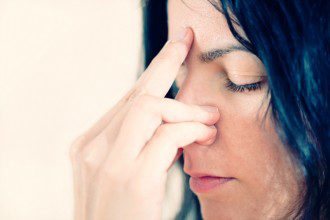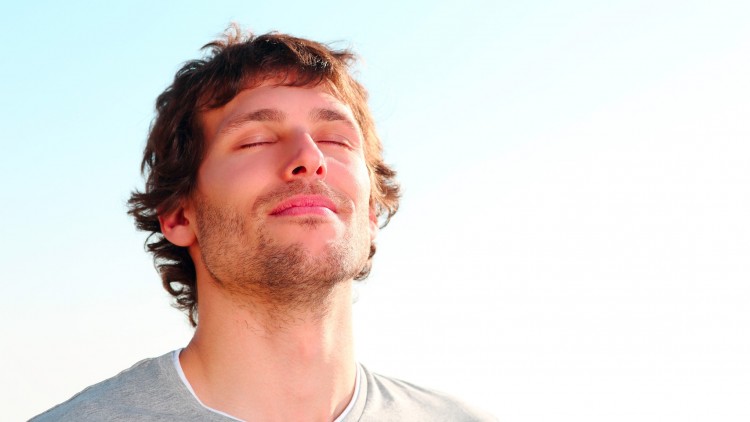Contributing Writer for Wake Up World
Most of us who care about health generally pay close attention to the food we eat and the water we drink — settling for nothing less than the cleanest and most nutritious choices whenever possible. We exercise, get enough sleep and try our best to keep stress levels down. Even so, we can somehow feel less than vibrant. Whether coping with a serious disease or simply experiencing a sense of chronic fatigue, depression or anxiety, we may wonder what we’re doing wrong. It may surprise you then that many of our health complaints are actually linked with over-breathing — in other words, taking in too much oxygen.
We readily accept that limiting caloric intake is associated with longevity. After all, over consuming food has been proven time and again to create metabolic damage. Why wouldn’t the same be true for the “nutrient” of oxygen? Especially when we consider that free radicals are created during the normal metabolism of oxygen. These are the same molecules that are exceptionally destructive to cell membranes, proteins and DNA. Contrary to popular thought, taking in an abundance of oxygen is extremely unhealthy. Instead, we should be focusing on creating more efficient utilization of the oxygen already present within the system. This is where the genius of the Buteyko Method comes in.
Reap the Benefits of High Altitude Training Without Leaving the Couch
“… If you were to look at the basic premise of breathing, we should not hear our breathing during rest. We should see very little movement from the chest and tummy. Ideally, most of our breathing is diaphragmatic, but we shouldn’t see it. The mouth should be closed, breathing should be regular, and breathing should be effortless.” ~ Dr. Patrick McKeown
It’s well known among elite athletes that training in a high altitude environment improves overall physical performance. The reason for this is that they take in less oxygen, which forces the blood to increase its capacity and utilization, thereby contributing to the VO2 max — the volume of oxygen the athlete can use.
The Buteyko Method was created to mimic this same limited oxygen environment — without having to live in high altitude regions. After recognizing the important role carbon dioxide (CO2) plays in releasing oxygen from the blood to the cells and tissues — otherwise known as the Bohr effect — Dr. Konstantin Buteyko invented a breathing method that increased CO2 concentration in the body. He then took the idea further by associating a range of modern medical conditions with a lack of CO2 — from asthma to high blood pressure and ADHD. Several ways we take in too much oxygen — and generate too little CO2 — is through mouth breathing, sighing, upper chest breathing and taking a large breath before talking or laughing.
Since stress increases our breathing rate, it’s easy to fall into a state of chronic hyperventilation without realizing it. Excessive talking and overeating both lead to dysfunctional breathing patterns as well. Processed foods, high protein and grain meals also have an adverse effect on breathing because they tend to acidify the blood. The body reacts by attempting to harmonize pH levels, which makes you breathe heavier. Raw fruits and vegetables exert the least influence over the breath, followed by cooked vegetables.
Writes Patrick McKeown in his book, ‘The Oxygen Advantage: The Simple, Scientifically Proven Breathing Techniques for a Healthier, Slimmer, and Fitter You’:
“We assume that the body reflexively knows how much air it needs at all times, but unfortunately this is not the case. Over the centuries we have altered our environment so dramatically that many of use have forgotten our innate way of breathing. The process of breathing has been warped by chronic stress, sedentary lifestyles, unhealthy diets, overheated homes, and lack of fitness. All of these contribute to poor breathing habits. These in turn contribute to lethargy, weight gain, sleeping problem, respiratory conditions, and heart disease.”
Chronic overbreathing is also linked with the following health issues:
- Heart palpitations
- Angina
- Shortness of breath or chest tightness
- Allergies
- Weakness and exhaustion
- Cold hands and feet
- Dizziness
- Irritable cough
- Poor concentration and memory
- Tachycardia
- Muscle cramps and stiffness
- Acid reflux, heartburn
- Headaches
- Numbness and tingling
- Anxiety
- Sleep Apnea
- Restless sleep and nightmares
- Gas, bloating and abdominal discomfort
A Simple and Economical Tool for Ultimate Health and Wellness
One of the main objectives of the Buteyko Method is to encourage breathing exclusively through the nose. This is because the nose contains small amounts of nitric oxide, an important gas which dilates the bronchial passages in the lungs, kills germs/bacteria and is a potent vasodilator. Nose breathing also harmonizes your breathing volume, making it more difficult to chronically hyperventilate.
A simple way to determine if you are overbreathing is to practice the control pause (CP):
- Take in a normal sized breath in and out through your nose. Hold your nose gently and start your stopwatch.
- Hold your breath until you feel the first onset of a feeling of lack of air.
- At this point release your nose, breathe in gently through your nose and stop the stopwatch. [Source]
Please note: if you are pregnant, have panic attacks, high blood pressure, cardiac problems or type one diabetes, do not hold your breath beyond the first impulse to breathe.
After you’ve established your control pause level, here’s how to evaluate the result:
- CP 40-60 seconds: A healthy breathing pattern and exceptional physical endurance.
- CP 20-40 seconds: Suggests a mild breathing impairment, moderate tolerance to physical exertion and possible future health problems.
- CP 10-20 seconds: A significant breathing impairment with poor tolerance for physical exercise; nasal breath training and lifestyle modifications are recommended.
- CP under 10 seconds: Serious breathing impairment, very poor exercise tolerance and chronic health problems; consulting a Buteyko practitioner is highly recommended.
The Buteyko Practice Diary and Quick Reference Guide [PDF] provides basic instructions on the technique. And the video below demonstrates how to increase your control pause length, clear the nasal passages and reduce snoring/sleep apnea. Further information about the Buteyko Method and how to locate a practitioner can be found here.
Unblock Your Nose and Stop Snoring in 3 Minutes
Article sources
- The Oxygen Advantage: The Simple, Scientifically Proven Breathing Techniques for a Healthier, Slimmer, and Fitter You, Patrick McKeown, HarperCollins, 2015
- www.articles.mercola.com/sites/articles/archive/2013/11/24/buteyko-breathing-method.aspx
- www.buteykobreathing.org/ButeykoDiary.pdf
- www.buteykoforkids.org/
- www.articles.mercola.com/sites/articles/archive/2015/09/19/buteyko-breathing-oxygen-advantage.aspx?
Previous articles by Carolanne Wright:
- Urban Edible Forests: The Future of Food is Here!
- Considering the Flu Shot? Here are Five Reasons to Think Twice
- Dr Sebi: The Man Who Cures Aids, Cancer, Diabetes and More
- Plastic-Eating Mushroom Discovered in the Amazon Rainforest — A Solution for Our Trash Saturated World?
- Chronic Lyme Disease: A Modern Plague the Government Chooses to Ignore
- Big Pharma and Organized Crime — They are More Similar Than You May Think
- Over 100 Scientific Studies Agree: Cannabis Annihilates Cancer
- Emotional Energetic Healing: The Future of Medicine is Here
- Why Every Parent Should Consider Unschooling
- The Greenhouse of the Future: Grow Your Own Food Year-Round With This Revolutionary System
- First U.S. City Produces More Electricity Than It Uses — With 100% Renewable Technology
- Autistic Boy with Higher IQ Than Einstein Discovers Gift After Removal from State-Run Therapy
About the author:
I’m Carolanne — a writer, chef, traveler and enthusiastic advocate for sustainability, organics and joyful living. It’s good to have you here. If you would like to learn more, connect with me at Thrive-Living.net or visit Twitter.com/Thrive_Living.

If you've ever found value in our articles, we'd greatly appreciate your support by purchasing Mindful Meditation Techniques for Kids - A Practical Guide for Adults to Empower Kids with the Gift of Inner Peace and Resilience for Life.
In the spirit of mindfulness, we encourage you to choose the paperback version. Delve into its pages away from screen glare and notifications, allowing yourself to fully immerse in the transformative practices within. The physical book enriches the learning process and serves as a tangible commitment to mindfulness, easily shared among family and friends.
Over the past few years, Wake Up World has faced significant online censorship, impacting our financial ability to stay online. Instead of soliciting donations, we're exploring win-win solutions with our readers to remain financially viable. Moving into book publishing, we hope to secure ongoing funds to continue our mission. With over 8,500 articles published in the past 13 years, we are committed to keeping our content free and accessible to everyone, without resorting to a paywall.










